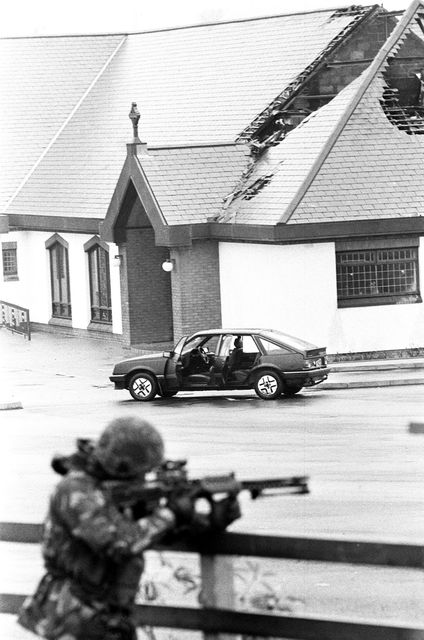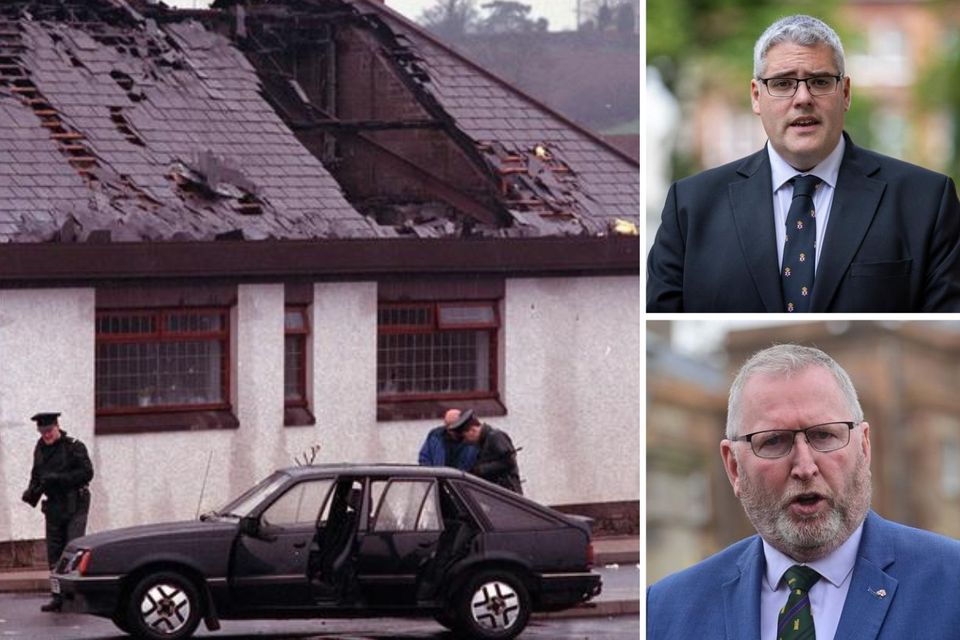A coroner’s ruling that an SAS team was unjustified in shooting dead an IRA gang on a terror mission could open the door for prosecutions, it is claimed.
It comes amid unionist anger over the findings of an inquest into the deaths of Patrick Vincent, Kevin O’Donnell, Peter Clancy and Sean O’Farrell.
DUP leader Gavin Robinson said it “beggars belief”.
The men — all members of the IRA’s east Tyrone brigade — were killed in the grounds of St Patrick’s Church near Clonoe in 1992, minutes after attacking Coalisland RUC Station.
Soldiers fired more than 500 rounds as the gang dumped a hijacked lorry used in the machine gun attack.
Delivering his findings in Belfast, presiding coroner Mr Justice Michael Humphreys found that in each case, the use of lethal force was not justified.
Mr Justice Humphreys, who is also a High Court judge, said the soldiers did not have an honest belief that lethal force was necessary to prevent loss of life, and its use by the soldiers was not reasonable.
The Daily Telegraph reported that the case could now be referred to prosecutors and police for criminal investigation.
One military source told The Telegraph: “As night follows day, we expect the coroner to refer these soldiers to prosecutors for investigation and possible prosecution.”
Outside the court, Niall Murphy, a solicitor for the families, said: “Whereas truth has been excavated and published today, justice has not. And we’re going to carefully consider this verdict with regards to any prospect of prosecutions.”
But unionists criticised the coroner’s ruling.
Mr Robinson said: “The SAS operation at Clonoe was absolutely necessary and lawful action against an armed IRA unit that had just carried out an attack on a police station, posing an immediate and ongoing threat to security forces and civilians. This judgement beggars belief.”
Ulster Unionist MLA Doug Beattie said it was “ludicrous to say that the shooting of four heavily armed terrorists” was unjustified.
He added: “Nobody wants to see loss of life but when we weigh up the intent of the terrorists in what was an organised and murderous action, the end result is, to all right-minded people, justified.”
The scene of the shootings (Pacemaker)
A spokesperson for the Lord Chief Justice’s office said: “The full findings and verdict of Mr Justice Humphreys have been published and this office has nothing to add.”
The inquest was told that each of the men died shortly before 11pm on February 16, 1992.
The soldiers involved were referred to by ciphers, not their names.
Mr Justice Humphreys said that in his statement, Soldier F claimed he opened fire when he believed those in the lorry were about to open fire on the patrol.
However, the inquest found that the IRA members were attempting to descend the lorry and run away and they could not have posed as a threat.
It found that O’Donnell (21) was shot in the back whilst attempting to flee and then again in the face whilst lying incapacitated on the ground.
Mr Justice Humphreys rejected claims by Soldiers F and H that they had an honest belief they needed to use force, and said it “must have been obvious to them” that O’Donnell presented no viable threat.
Clancy (21) was shot whilst attempting to run away and then repeatedly whilst in a crouched or kneeling position on the ground.
Vincent (20) was shot whilst seated in the cab of the lorry and then again when lying incapacitated across the seat of the lorry through its open doors, while O’Farrell (22) was shot in the back whilst running away and then in the face whilst lying on the ground incapacitated.
“It has the entirety of my life that this process has been ongoing” – Sister of Patrick Vincent
Mr Justice Humphreys also noted how police reports in the aftermath, including those provided to government ministers, referred to simultaneous firing and a firefight.
He said these statements were “demonstrably untrue and must have been known to be untrue”.

